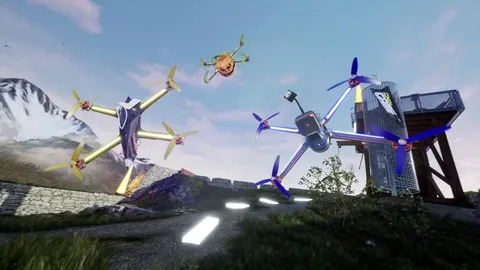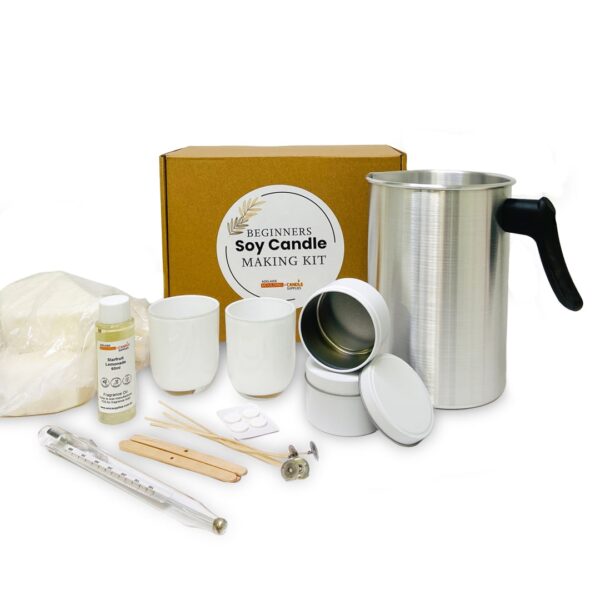The Drone Champions League (DCL) is one of the most prestigious drone racing competitions in the world, attracting the best pilots to navigate challenging tracks at breakneck speeds. Precision is not just a competitive edge in DCL; it’s a necessity. In a sport where drones travel over 100 km/h through tight turns, tunnels, and gates, even a slight error can mean the difference between victory and defeat.
If you’re looking to sharpen your skills and race with precision in Drone Champions League events, this guide is for you. We’ll explore the key techniques, strategies, and preparations needed to master the art of precision drone racing. Whether you’re a seasoned racer or a beginner, the following tips will help you stay ahead of the competition.
1. Understand the DCL Track Dynamics
DCL races are known for their complex and challenging tracks, set in iconic locations around the world. Each track is designed to test your speed, agility, and precision. To race effectively, it’s essential to understand the unique dynamics of DCL tracks.
a. Analyze the Track Layout
Before a race, take the time to study the track layout. DCL tracks feature a mix of sharp turns, narrow gates, vertical drops, and tunnels that require precise control. Use Drone Champions League – The Game, the official simulator, to practice on actual league tracks.
Key track analysis tips:
- Identify high-speed sections where you can push for maximum speed.
- Spot tricky corners and tight gates that require precision flying.
- Memorize critical sections that can make or break your lap times.
b. Know the Obstacles
Each DCL track includes unique obstacles that can catch even experienced pilots off guard. Pay attention to overhanging structures, sudden elevation changes, and tunnels. Understanding how to approach these obstacles can help you maintain speed without sacrificing control.
c. Plan Your Racing Lines
In drone racing, the racing line refers to the optimal path around the track that allows you to maintain the highest speed with the least amount of steering. Plan your racing lines to minimize distance and maximize speed through corners.
2. Optimize Your Drone Setup for Precision
Racing with precision in the DCL requires a finely tuned drone. Your drone setup can significantly impact your performance, so it’s crucial to optimize it for speed, agility, and control.
a. Choose the Right Frame
A lightweight, aerodynamic frame is essential for navigating the tight turns and narrow gates of DCL tracks. Carbon fiber frames are a popular choice due to their durability and low weight. The frame should be compact enough to fit through narrow gates but sturdy enough to withstand crashes.
b. Select High-Performance Motors and Propellers
The right combination of motors and propellers can greatly enhance your drone’s agility and responsiveness. Choose high-RPM motors that deliver quick acceleration, paired with efficient propellers that provide a good balance of thrust and control.
- Motor KV rating: A higher KV rating offers more speed but can reduce control. For DCL races, aim for motors with a KV rating that suits your racing style and track conditions.
- Propeller pitch: Propellers with a higher pitch generate more thrust but can decrease precision. Use props that offer a balance between speed and stability.
c. Tune Your Flight Controller
Fine-tuning your flight controller settings is essential for achieving the precision needed in DCL races. Adjust your PID (Proportional, Integral, Derivative) settings to match the track’s demands and your flying style. Higher PIDs increase responsiveness, while lower PIDs provide smoother control.
- Rates: Adjust your drone’s rates to control how quickly it responds to your stick inputs. Higher rates increase agility, while lower rates improve precision.
- Expo settings: Use exponential (expo) settings to soften the response near the center of your stick inputs, allowing for finer control during precision maneuvers.
d. Use High-Quality FPV Gear
Having a clear, low-latency FPV (First Person View) feed is critical for precision racing. Invest in high-quality FPV cameras and goggles to get the best possible view of the track. This will help you make split-second decisions with confidence.
3. Develop Advanced Flying Techniques
Precision in DCL racing is not just about having the best drone setup; it’s also about mastering advanced flying techniques. The more control you have over your drone, the better your chances of dominating the competition.
a. Throttle Control
Throttle control is one of the most critical skills in drone racing. Mastering throttle management allows you to maintain consistent speed and avoid overcorrections, especially when navigating tight sections of the track.
- Smooth throttle input: Avoid jerky throttle movements, as they can destabilize your drone. Use smooth, gradual inputs to maintain control.
- Throttle blipping: This technique involves quickly tapping the throttle to adjust altitude without losing forward momentum, ideal for navigating tight gates and tunnels.
b. Master Cornering Techniques
Cornering efficiently is key to shaving seconds off your lap times. Use techniques like banking turns and split-s maneuvers to maintain speed through corners without drifting wide.
- Banked turns: Tilt your drone into the turn, using a combination of roll and yaw inputs to maintain a tight racing line.
- Split-s turns: A split-s is an advanced maneuver that involves rolling your drone 180 degrees while pulling up to reverse direction. This technique is useful for sharp U-turns.
c. Precision Gate Passing
Flying through gates with accuracy is a core component of DCL races. Practice flying through gates in the simulator to build muscle memory and improve your reflexes.
- Centering: Aim for the center of the gate to reduce the risk of clipping the edges.
- Pre-turning: Start your turn just before reaching the gate to align your drone for a smoother exit.
4. Train with Purpose
Consistent practice is essential for achieving precision in drone racing. However, not all practice is equally effective. To maximize your training sessions, focus on specific skills and scenarios.
a. Use DCL – The Game for Practice
The official DCL simulator is a powerful tool for improving your precision flying skills. Use it to practice on real-world DCL tracks and compete in online races against other pilots.
- Time trials: Use time trials to perfect your racing lines and improve lap times.
- Ghost racing: Race against ghost drones to benchmark your performance against top pilots.
b. Simulate Real-World Conditions
DCL races can take place in a variety of environments, from indoor arenas to outdoor cityscapes. Practice in different simulated conditions, such as low light or windy environments, to prepare for real-world challenges.
c. Set Specific Goals
During each practice session, set clear, achievable goals. Focus on improving specific aspects of your flying, such as gate accuracy, cornering speed, or throttle management.
5. Mental Preparation and Focus
Precision drone racing is as much a mental game as it is a physical one. The pressure of competing in the Drone Champions League can be intense, and staying focused is crucial for success.
a. Stay Calm Under Pressure
High-speed racing can trigger adrenaline, which may affect your control. Practice mindfulness techniques, such as deep breathing and visualization, to stay calm and focused during races.
b. Visualization Techniques
Before each race, visualize yourself flying through the track flawlessly. This mental rehearsal can help improve your reaction times and reduce anxiety.
c. Develop a Race Routine
Having a pre-race routine can help you get into the right mindset. This could include warming up with practice laps, reviewing track notes, and ensuring your drone is fully prepared.
6. Analyze Your Races
After each race, take the time to review your performance. Analyzing race footage and telemetry data can help you identify areas for improvement.
a. Review FPV Footage
Watch recordings of your FPV flights to analyze your racing lines, cornering techniques, and any mistakes you made. Look for opportunities to refine your approach.
b. Use Telemetry Data
Many racing drones come equipped with telemetry systems that record data such as speed, altitude, and battery usage. Use this data to evaluate your performance and optimize your strategy for future races.
Conclusion
Racing with precision in Drone Champions League events requires a combination of technical skills, optimized drone setup, advanced flying techniques, and mental resilience. By understanding the track dynamics, mastering your drone, developing precise flying techniques, and staying mentally sharp, you can significantly improve your performance.
Whether you’re a newcomer to the DCL or an experienced pilot looking to enhance your precision, the key is consistent practice, careful preparation, and a focus on continuous improvement. The thrill of racing in the Drone Champions League is like no other, and with the right approach, you can rise to the top and leave your mark in the world of competitive drone racing.



